You are given a rooted tree with n vertices. The vertices are numbered from 1 to n, the root is the vertex number 1.
Each vertex has a color, let's denote the color of vertex v by cv. Initially cv = 0.
You have to color the tree into the given colors using the smallest possible number of steps. On each step you can choose a vertex v and a color x, and then color all vectices in the subtree of v (including v itself) in color x. In other words, for every vertex u, such that the path from root to u passes through v, set cu = x.
It is guaranteed that you have to color each vertex in a color different from 0.
You can learn what a rooted tree is using the link: https://en.wikipedia.org/wiki/Tree_(graph_theory).
The first line contains a single integer n (2 ≤ n ≤ 104) — the number of vertices in the tree.
The second line contains n - 1 integers p2, p3, ..., pn (1 ≤ pi < i), where pi means that there is an edge between vertices i and pi.
The third line contains n integers c1, c2, ..., cn (1 ≤ ci ≤ n), where ci is the color you should color the i-th vertex into.
It is guaranteed that the given graph is a tree.
Print a single integer — the minimum number of steps you have to perform to color the tree into given colors.
6 1 2 2 1 5 2 1 1 1 1 1
3
7 1 1 2 3 1 4 3 3 1 1 1 2 3
5
The tree from the first sample is shown on the picture (numbers are vetices' indices):
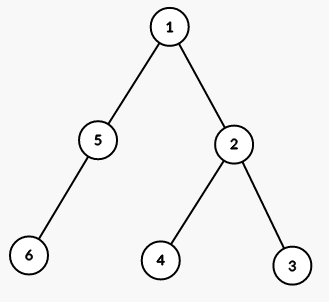
On first step we color all vertices in the subtree of vertex 1 into color 2 (numbers are colors):
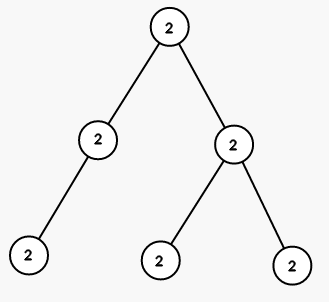
On seond step we color all vertices in the subtree of vertex 5 into color 1:

On third step we color all vertices in the subtree of vertex 2 into color 1:
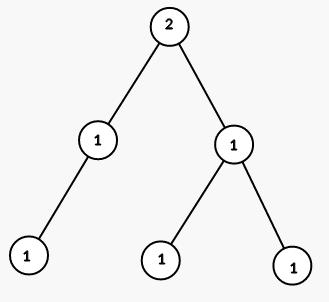
The tree from the second sample is shown on the picture (numbers are vetices' indices):

On first step we color all vertices in the subtree of vertex 1 into color 3 (numbers are colors):
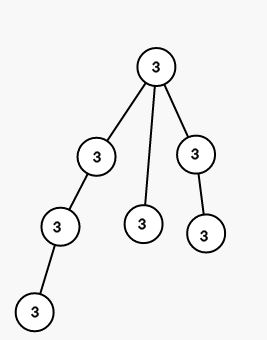
On second step we color all vertices in the subtree of vertex 3 into color 1:
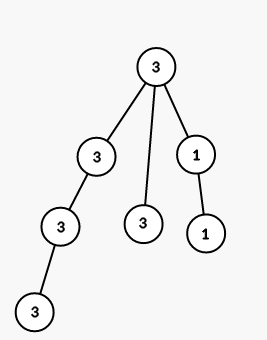
On third step we color all vertices in the subtree of vertex 6 into color 2:

On fourth step we color all vertices in the subtree of vertex 4 into color 1:

On fith step we color all vertices in the subtree of vertex 7 into color 3:
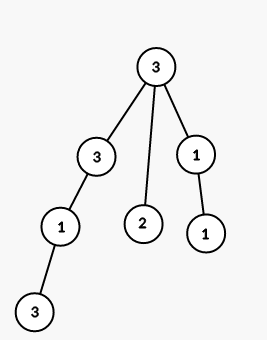
树的构建和递归。
#include <bits/stdc++.h>
using namespace std;
int head[10005];
int cc[10005];
int ans;
struct node{
int c;
int next;
};
node tree[10005];
void add_edge(int from,int to){
tree[to].next=head[from];
head[from]=to;
}
void dfs(int x){
if(head[x]==0)return;
tree[x].c=cc[x];
for(int i=head[x];i!=0;i=tree[i].next){
if(cc[i]!=tree[x].c){
ans++;
}
dfs(i);
}
}
void solve(){
int n;
scanf("%d",&n);
for(int i=2;i<=n;i++){
int a;
scanf("%d",&a);
add_edge(a,i);
}
for(int i=1;i<=n;i++){
scanf("%d",&cc[i]);
}
dfs(1);
ans++;
printf("%d",ans);
return;
}
int main(){
solve();
return 0;
}
也可以不建树学习了,大神的思路就是不一样。
#include <bits/stdc++.h>
using namespace std;
int f[10005];
int c[10005];
void solve(){
int n;
scanf("%d",&n);
for(int i=2;i<=n;i++){
int a;
scanf("%d",&a);
f[i]=a;
}
for(int i=1;i<=n;i++){
scanf("%d",&c[i]);
}
int ans=1;
for(int i=2;i<=n;i++){
if(c[i]!=c[f[i]]){
ans++;
}
}
printf("%d",ans);
return;
}
int main(){
solve();
return 0;
}





















 177
177











 被折叠的 条评论
为什么被折叠?
被折叠的 条评论
为什么被折叠?








